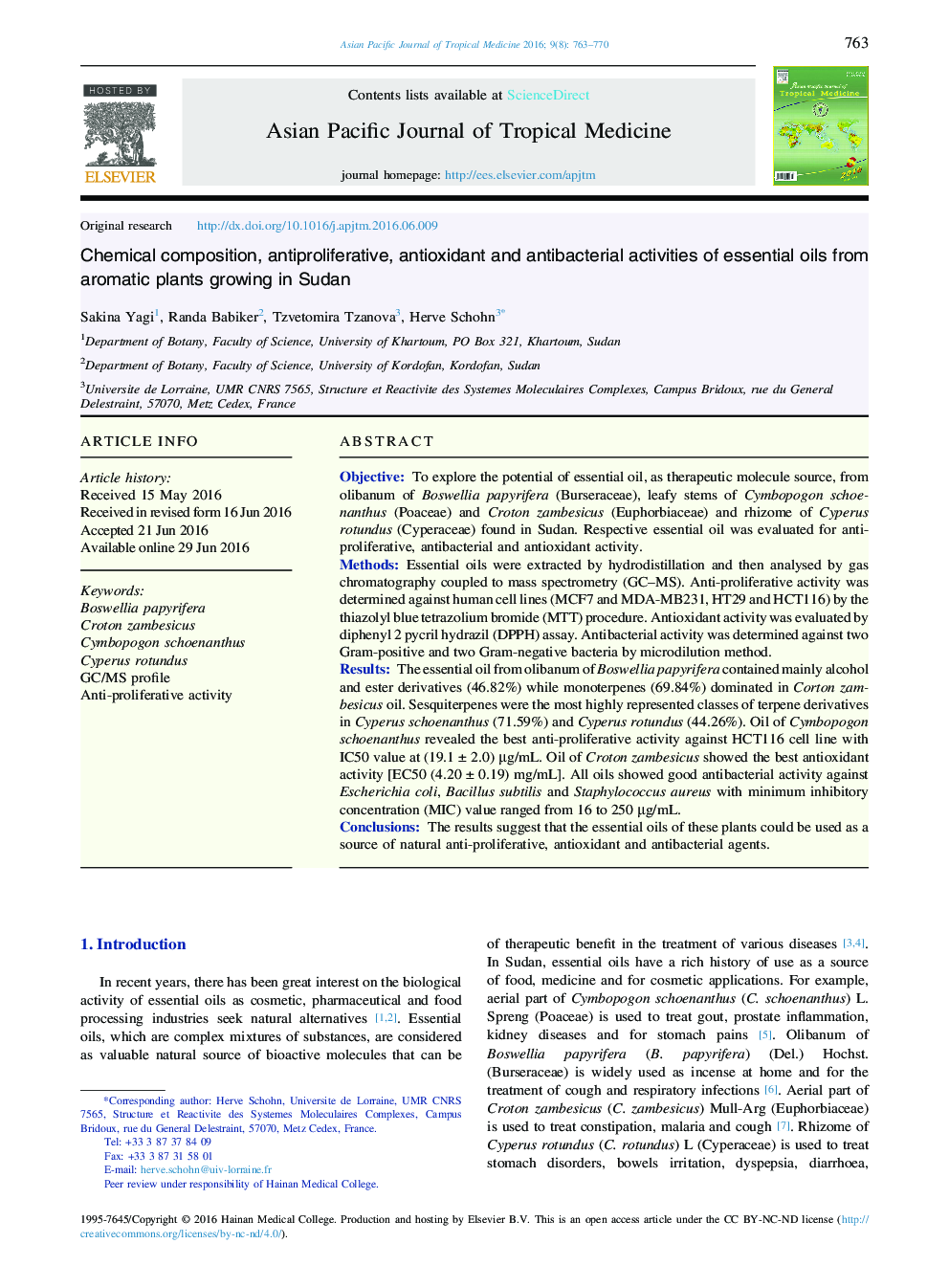| Article ID | Journal | Published Year | Pages | File Type |
|---|---|---|---|---|
| 3455142 | Asian Pacific Journal of Tropical Medicine | 2016 | 8 Pages |
ObjectiveTo explore the potential of essential oil, as therapeutic molecule source, from olibanum of Boswellia papyrifera (Burseraceae), leafy stems of Cymbopogon schoenanthus (Poaceae) and Croton zambesicus (Euphorbiaceae) and rhizome of Cyperus rotundus (Cyperaceae) found in Sudan. Respective essential oil was evaluated for anti-proliferative, antibacterial and antioxidant activity.MethodsEssential oils were extracted by hydrodistillation and then analysed by gas chromatography coupled to mass spectrometry (GC–MS). Anti-proliferative activity was determined against human cell lines (MCF7 and MDA-MB231, HT29 and HCT116) by the thiazolyl blue tetrazolium bromide (MTT) procedure. Antioxidant activity was evaluated by diphenyl 2 pycril hydrazil (DPPH) assay. Antibacterial activity was determined against two Gram-positive and two Gram-negative bacteria by microdilution method.ResultsThe essential oil from olibanum of Boswellia papyrifera contained mainly alcohol and ester derivatives (46.82%) while monoterpenes (69.84%) dominated in Corton zambesicus oil. Sesquiterpenes were the most highly represented classes of terpene derivatives in Cyperus schoenanthus (71.59%) and Cyperus rotundus (44.26%). Oil of Cymbopogon schoenanthus revealed the best anti-proliferative activity against HCT116 cell line with IC50 value at (19.1 ± 2.0) μg/mL. Oil of Croton zambesicus showed the best antioxidant activity [EC50 (4.20 ± 0.19) mg/mL]. All oils showed good antibacterial activity against Escherichia coli, Bacillus subtilis and Staphylococcus aureus with minimum inhibitory concentration (MIC) value ranged from 16 to 250 μg/mL.ConclusionsThe results suggest that the essential oils of these plants could be used as a source of natural anti-proliferative, antioxidant and antibacterial agents.
